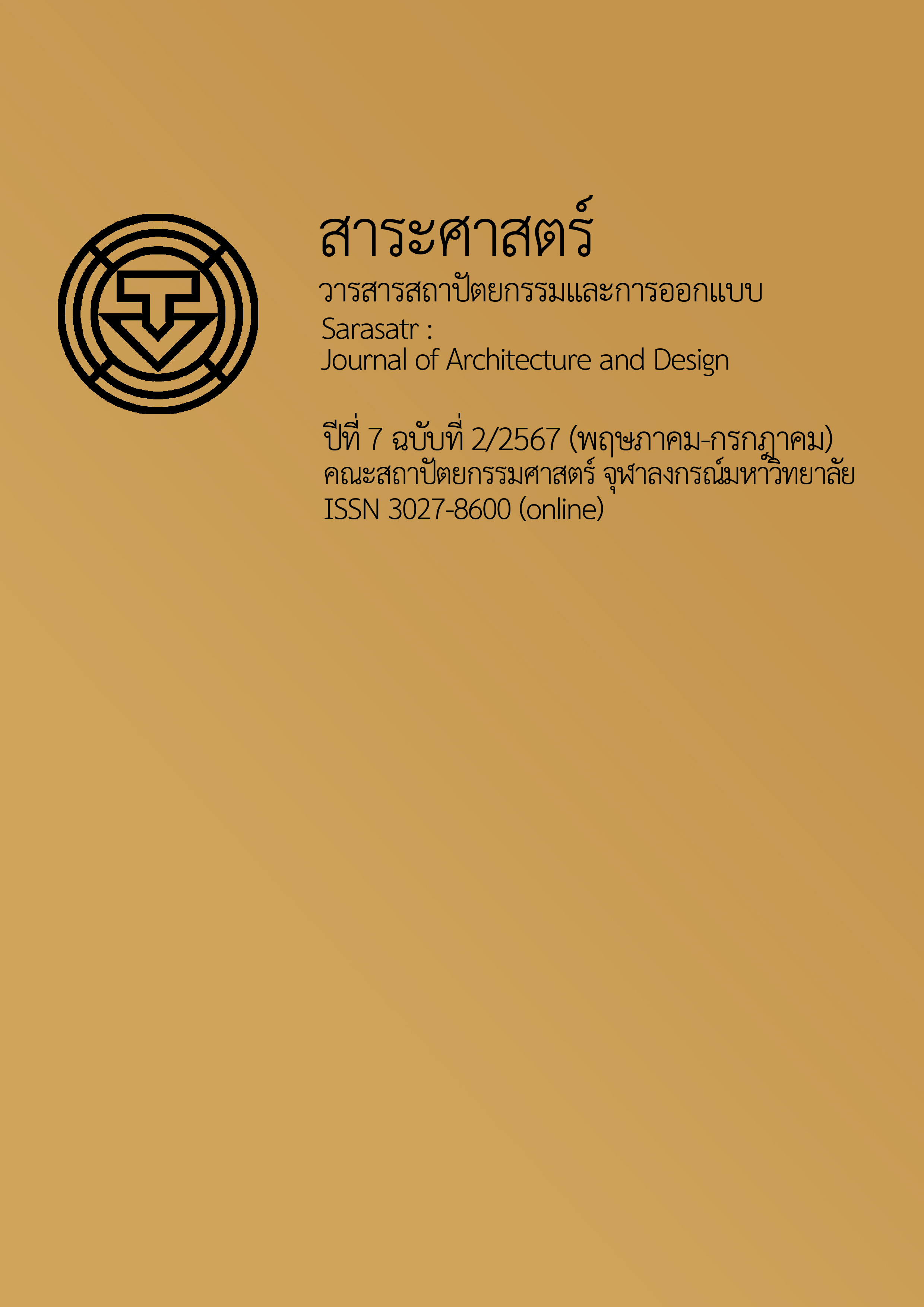การวิเคราะห์ความเหมาะสมของพื้นที่เพื่อการพัฒนาการท่องเที่ยวเชิงกีฬา ชายฝั่งทะเลในจังหวัดนครศรีธรรมราช
Main Article Content
บทคัดย่อ
พื้นที่ชายฝั่งทะเลของจังหวัดนครศรีธรรมราชมีระบบนิเวศที่หลากหลาย ภูมิทัศน์ที่สวยงาม และโครงสร้างพื้นฐานสำหรับการท่องเที่ยวที่เพียบพร้อม ดังนั้นจังหวัดนครศรีธรรมราชจึงมีศักยภาพสูงในการพัฒนาพื้นที่สำหรับการท่องเที่ยวเชิงกีฬาชายฝั่งทะเลในรูปแบบการท่องเที่ยวเพื่อเล่นกีฬา โดยการพัฒนาพื้นที่สำหรับการท่องเที่ยวเชิงกีฬาชายฝั่งทะเลนั้นทั้งต้องพึ่งพาและส่งผลกระทบต่อระบบนิเวศชายฝั่งทะเล งานวิจัยนี้จึงมีจุดมุ่งหมายเพื่อประยุกต์ใช้การวิเคราะห์ความเหมาะสมของพื้นที่ในการบ่งชี้พื้นที่ชายฝั่งทะเลของจังหวัดนครศรีธรรมราชที่เหมาะสมในการพัฒนาเพื่อการท่องเที่ยวเชิงกีฬาชายฝั่งทะเล 2 ชนิด ได้แก่ วอลเล่ย์บอลชายหาดและโต้คลื่น ซึ่งได้รับการคัดเลือกเพื่อใช้เป็นกีฬาตัวอย่าง
ผลการวิจัยพบว่า เกณฑ์ร่วมกันในการวิเคราะห์ความเหมาะสมสำหรับกีฬาวอลเล่ย์บอลเเละโต้คลื่น ได้แก่ 1) ขนาดสนามแข่งขันและบริเวณโดยรอบ 2) ความชันสนามแข่งขัน 3) พื้นผิวสนามแข่งขัน 4) ความแรงของลมทะเล 5) การเข้าถึงหาดและ 6) การเข้าถึงสถานพยาบาล ส่วนเกณฑ์ที่ต่างกัน ได้แก่ 1) ทิศทางของลมและแดด และ 2) ชนิดของคลื่น และ 3) ความชันของความลึกพื้นท้องทะเล จากการวิเคราะห์ความเหมาะสมของพื้นที่ด้วยวิธีการซ้อนทับชั้นข้อมูลตามเกณฑ์ดังกล่าวพบว่า พื้นที่ที่เหมาะสมในการพัฒนากีฬาวอลเล่ย์บอลและกีฬาโต้คลื่น ได้แก่ 1) หาดเเขวงเภา 2) หาดขนอม 3) หาดในเพลา 4) อ่าวท้องยาง5) หาดทุ่งใส 6) หาดสิชล และ 7) หาดเสาเภา-ท่าศาลา ซึ่งมีลักษณะที่สำคัญ ได้แก่ 1) หาดที่กว้างเพียงพอต่อสนามกีฬาและสาธารณูปโภค 2) ความชันของหาดที่น้อย 3) หาดทรายล้วน 4) ความแรงของลมทะเลที่น้อย 5) การเข้าถึงหาดที่สะดวกจากถนน 6) การเข้าถึงสถานพยาบาลที่สะดวก 7) ทิศทางของลมและแดดที่เหมาะสมกับกีฬาวอลเล่ย์บอลชายหาด 8) ชนิดของคลื่นที่เหมาะสมกับกีฬาโต้คลื่น และ 9) ค่าความชันของความลึกพื้นท้องทะเลที่น้อย ทั้งนี้ ในการพัฒนาพื้นที่หาดดังกล่าวเพื่อการท่องเที่ยวเชิงกีฬาชายฝั่งทะเลให้ยั่งยืนจำเป็นต้องมีการวางแผนจัดการภูมิทัศน์และการพัฒนาโครงสร้างขั้นพื้นฐานสำหรับการท่องเที่ยวเพิ่มเติมต่อไป
Article Details
เอกสารอ้างอิง
กรมทรัพยากรทางทะเลและชายฝั่ง. (2556). ทรัพยากรทางทะเลและชายฝั่งจังหวัดนครศรีธรรมราช. https://www.dmcr.go.th/detailLib/3757
กรมทรัพยากรธรณี. (2567a). เส้นการเปลี่ยนแปลงชายฝั่งทะเล. https://data.dmr.go.th/ne/dataset/coastal-change
กรมทรัพยากรธรณี. (2567b). เส้นชั้นความลึกพื้นท้องทะเล. https://data.dmr.go.th/en/dataset/bathymetry
กระทรวงการท่องเที่ยวและกีฬา. (2559). โครงการศึกษาแนวทางการพัฒนาและส่งเสริมการท่องเที่ยวเชิงกีฬา (Sports Tourism). https://secretary.mots.go.th/ewtadmin/ewt/policy/article_attach/FinalReport_SportsTourism2559.pdf
การท่องเที่ยวแห่งประเทศไทย. (2564). รายงานฉบับสมบูรณ์ โครงการศึกษาพฤติกรรมการเดินทางท่องเที่ยวเมืองรองของนักท่องเที่ยวชาวไทย. http://tourismlibrary.tat.or.th/medias/T26966.pdf
สันติ ภัยหลบลี้. (2561). 22 นครศรีธรรมราช ภูมิศาสตร์ แผนที่. https://www.mitrearth.org/m22-nakhon-si-thammarat/
สำนักงบประมาณของรัฐสภา. (2564). ข้อเสนอแนวทางการส่งเสริมท่องเที่ยวเมืองรองเพื่อกระจายรายได้จากการท่องเที่ยว. สำนักการพิมพ์สำนักงานเลขาธิการสภาผู้แทนราษฎร.
สำนักงานการท่องเที่ยวและกีฬาจังหวัดนครศรีธรรมราช. (2564). แผนพัฒนาการท่องเที่ยวจังหวัดนครศรีธรรมราช พ.ศ. 2565-2570. https://nakhonsi.mots.go.th/ewt_dl_link.php?nid=997
สํานักงานปลัดกระทรวงการท่องเที่ยวและกีฬา. (2567). รายงานภาวะเศรษฐกิจการท่องเที่ยว ปีที่ 5 ฉบับที่ 2. https://secretary.mots.go.th/ewtadmin/ewt/policy/download/article/article_20240426115117.pdf
Alongi, D. M. (1998). Coastal ecosystem process. CRC Press.
Artikel, M. (2021). Football stadium guideline. https://publications.fifa.com/de/football-stadiums-guidelines/general-process-guidelines/design/orientation/
Captain, S. (2020). Understanding the surf wind condition forecast. https://surfcaptain.com/blog/1/understanding-wind-condition-forecast
Doody, J. P. (2001). Coastal conservation and management an ecological perspective. Kluwer Academic.
Dvorak, J., Kramer, E. B., Mandelbaum, B., Zideman, D., Schmied, C., Patricios, J., Correia, L. F. B., & Pedrinelli, A. (2021). Football emergency medicine manual (2nd ed.). Fédération Internationale de Football Association.
Fabbri, P. (1990). Recreational uses of coastal areas (P. Fabbri, Ed.). Springer Dordrecht. https://doi.org/https://doi.org/10.1007/978-94-009-2391-1
Fikri, I., Riani, E., & Nedi, S. (2024). Marine tourism suitability index in the Padang beach tourism area, West Sumatra. Jurnal Penelitian Pendidikan IPA, 10, 1281-1291. https://doi.org/10.29303/jppipa.v10i3.5109
FIVB. (2021). Official beach volleyball rules 2021-2024. https://www.studocu.com/en-us/document/arkansas-state-university/ethical-issues-in-sport/fivb-beach-volleyball-rules-2021-2024-en-v01d/68540877
Ghafourian, S., & Sadeghzadeh, M. (2021). Coastal tourism planning using GIS-based system: The case of Shirud coast, Caspian sea, Mazandaran, Iran. GeoJournal, 87, 3231-3248.
Gibson, H. (1998). Sport tourism: A critical analysis of research. Sport Management Review, 1, 45-76. https://doi.org/10.1016/S1441-3523(98)70099-3
Globalwindatlas. (2024). GIS files & API access. https://globalwindatlas.info/api/gis/country/THA/wind-speed/10
Hall, C. M. (1992). Special interest tourism. In Adventure, sport and health tourism, (pp.141-158). Belhaven Press. https://eurekamag.com/research/002/020/002020073.php
Hinch, T., & Higham, J. (2001). Sport tourism: A framework for research. International Journal of Tourism Research, 3(1). https://doi.org/10.1002/1522-1970(200101/02)3:13.0.CO;2-A
Hinch, T., & Ito, E. (2018). Research, lifelong sport, and travel: Sustainable sport tourism in the prefecture of Okinawa. Journal of Japanese Society of Lifelong Sport, 15(2), 1-13.
Jennings, G. (2007). Water based tourism, sport, leisure, and recreation experiences. Butterworth-Heinemann.
Kirasheva, N., & Artemova, I. (2020). The complete guide to windsports and the wind speed required to practice them. https://windy.app/blog/the-complete-guide-to-windsports.html
Kuznetsov, I., & Windy App Team. (2020). How to read a surf forecast to get the best surfing experience. https://windy.app/blog/how-to-read-a-surf-forecast.html
McLachlan, A., Defeo, O., Jaramillo, E., & Short, A. (2013). Sandy beach conservation and recreation: Guidelines for optimising management strategies for multi-purpose use. Ocean & Coastal Management, 71, 256–268. https://doi.org/10.1016/j.ocecoaman.2012.10.005
Malczewski, J. (2006). GIS‐based multicriteria decision analysis: A survey of the literature. International Journal of Geographical Information Science, 20(7), 703-726.
Martha Honey, D. K. (2007). Global trends in coastal tourism. Center on Ecotourism and Sustainable Development Marine Program World Wildlife Fund, Washington, DC.
Moreno, A., & Amelung, B. (2009). Climate change and coastal & marine tourism: Review and analysis. Journal of Coastal Research, (56), 1140-1144. http://www.jstor.org/stable/25737965
Office, M. (2010). Beaufort. https://www.metoffice.gov.uk/binaries/content/assets/metofficegovuk/pdf/research/library-and-archive/library/publications/factsheets/factsheet_6-the-beaufort-scale.pdf
Oh, C.-O., Nam, J., & Kim, H. (2023). The impacts of offshore wind farms on coastal tourists’ behaviors in South Korea. Coastal Management, 51(1), 24-41. https://doi.org/10.1080/08920753.2023.2148848
Paula, D., Vasconcelos, Y., & Sousa, F. (2022). Effects of beach width variability on recreational function: A case study of NE Brazil. Regional Studies in Marine Science, 51, 102182. https://doi.org/10.1016/j.rsma.2022.102182
Short, A. D. (2012). Coastal processes and beaches. Nature Education Knowledge, 3(10), 15.
Simanjuntak, S. W., & Supriharyono, H. (2018). Analysis of suitability and carrying capacity of tourism in Tidung Island, Kepulauan Seribu of Indonesia. Russian Journal of Agricultural and Socio-Economic Sciences, 78, 151-159. https://doi.org/10.18551/rjoas.2018-06.16
Tim Goodhead , D. J. (1996). Coastal recreation management: The sustatinable development of maritime leisure. E & FN Spon.
Vermeersch, W., & Alcoforado, M. J. (2013). Wind as a resource for summer nautical recreation: Guincho beach study case. Finisterra, 48(95). https://doi.org/10.18055/Finis3134


